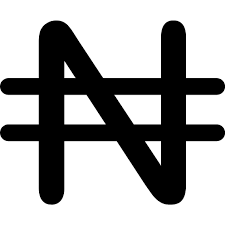From the commodity crashes to the rise of a new breed of technology-driven niche players, the traditional era of banking is finished. Our exclusive list of Africa’s Top 200 banks shows it: the profitability of Africa’s Top 200 banks in US dollars in 2018 took a sizeable hit- reaching the lowest level since 2014. Africa’s top 10 profitable banks represent nearly 50% of the total profits of our Top 200.
A special mention should go to Stanbic Uganda (#158), which made number 10 on that list- proof that size and profitability are not necessarily correlated.
Of course, some wounds are self-inflicted. Attijariwafa Bank (#7) is still trying to digest its purchase of the Egyptian subsidiary of Barclays Bank. Others have hitched a lift on an economic upswing. The top three Egyptian banks – Misr(#8), CIB(#18) and Al-Ahli(#23) – have all climbed in our ranking compared to last year.
But the collapse in oil and other commodity prices that began in late 2014 and continued through 2015 has wreaked havoc with economic operators across the continent. The banks in big commodity exporters were among the first in line to suffer and non-performing loans (NPLs) bloomed.
Take First Bank of Nigeria (#22), which is well-diversified across the economy. Its exposure to problematic companies proved a significant hiccup, pulling down its asset quality and preventing it from taking on other, more productive lending. On an earnings call, Urum Kalu Eke, director of FBN Holdings, which owns First Bank, explained how “the NPL ratio is down to 14.5% as of June 2019, from 25.9% at December 2018.[…] It
significant headroom for us to increase our exposure in the very lucrative oil and gas sector, where we’ve been shut out effectively over the past three years. ”
Still, at number one, South Africa’s Standard Bank (#1) managed to post profits of more than $2bn in 2018 but is constrained by the sinking sovereign rating, which is drying up the flows of capital towards South Africa.
South Africa’s problems are echoed elsewhere on the continent. As the US Federal Reserve slowly started raising rates in recent years, yield-hunting investors withdrew from Africa. The knock-on for banks has been limited, partly because governments are dependent on financing from domestic financial institutions. But while that works out OK for banks in short term – see the stellar results for 2017 – the result is industry, services, and agriculture all struggling to get loans, which drags the economy down.
Neither a borrower nor a hoarder
Nigeria’s central bank has pushed through a law requiring loan-to-deposit ratios to be 60% by 20 September 2019 – a move it hopes will force banks to start lending rather than hoarding. Kenyan lawmakers attempted the same, this time using an interest-rate cap, which most analysts agree has not been successful, often driving borrowers into the hands of under-regulated online lenders.
Regulators have been active in Ghana, too, demanding in 2017 a capital increase from ¢120m ($22.2m) to ¢400m, with a deadline of end -2018. The multi-year banking crisis that ensued, including President Nana Akufo-Addo, who called the Bank of Ghana’s response “lax”.
Chinese investment has provided some respite. Likewise, the cutting of US interest rates – the first time it has happened since the financial crash of 2009 – could precipitate a new wave of investors seeking yields in frontier and emerging markets. That, in turn, could see a fresh influx of cash and offer banks some space to consolidate and grow.
But there are other rocks in the water, especially for those banks stuck in the middle. The mobile revolution has allowed a new swath of ‘branchless’ banks to enter the market. South Africa’s TymeBank is just one of several digital banks to rock the boat for the mid-tier competitors such as African Bank (#125), which are neither able to service blue-chip customers nor to battle at the bottom of the pyramid-like they used to.
Meanwhile, telecoms and fin-techs are snapping at banks’ heels, carving outstrips from what used to be the hunting preserve of general service banks. In sub-Saharan Africa, there are more than 450 million unique mobile phone owners according to industry body GSMA, and 350 million adults lack a bank account, says the World Bank.
Africans biggest mobile phone company, MTN, has been granted a mobile-money license in one of Africans largest economies – Nigeria. This does not necessarily imply sudden death for Nigerian banks – immediately after listing in Lagos in May, MTN Nigeria took out a $653m loan from seven local banks. That suggests they will benefit, even indirectly, and optimists will argue that a greater circulation of money in the economy will float all boats.

METHODOLOGY
WE COMPILED OUR RANKING of Africans Top 200 banks by sending out detailed questionnaires to more than 1,000 financial institutions spread across the continent. Their replies were used to create a systematic ranking of African top banks based on total asset size. Our list features only the top 200 banks. All data is communicated to us by the banks or their parent companies. These figured relate to the 2018 financial year. Where that information was unavailable we used 2017 figures, indicated in the rankings by italics.
Banks are removed from the list if they do not supply data during two consecutive years. The data were converted to US$ using the exchange rates applicable on 31 December 2018. Numbers in the ‘Rank 2018’ column refer to a bank’s position in The Africa Report’s ranking of September 2018.
| Rank 2019 | Rank 2018 | Diff. | Bank | Country | Total assets | Net interest income | Loans | Deposits | |
| 20 | 21 | +1 | Zenith Bank | Nigeria | 16 318 645 | 809 928 | 4 995 324 | 10 111 401 | |
| 22 | 23 | +1 | First Bank of Nigeria | Nigeria | 15 257 186 | 778 620 | 4 613 648 | 9 553 533 | |
| 24 | 24 | 0 | Zenith Bank Nigeria | Nigeria | 13 577 919 | 667 628 | 4 756 821 | 7 729 721 | |
| 25 | 29 | +4 | Access Bank Group | Nigeria | 13 574 390 | 475 604 | 5 462 481 | 7 027 849 | |
| 32 | 34 | +2 | Access Bank Nigeria | Nigeria | 10 872 634 | 30 173 | 4 608 028 | 5 640 945 | |
| 35 | 41 | +6 | United Bank for Africa Nigeria | Nigeria | 9 840 176 | 373 467 | 3 325 815 | 6 642 056 | |
| 36 | 37 | +1 | Guaranty Trust Bank | Nigeria | 9 007 319 | 609 469 | 505 912 | 6 230 495 | |
| 64 | 75 | +11 | Fidelity Bank | Nigeria | 4 712 479 | 190 668 | 2 325 931 | 2 683 592 | |
| 66 | 74 | +8 | Stanbic IBTC Chartered Bank | Nigeria | 4 558 431 | 214 293 | 1 185 634 | 2 213 076 | |
| 67 | – | – | Africa Finance Corp. | Nigeria | 4 487 478 | 150 985 | 133 769 | 2 901 941 | |
| 74 | 72 | -2 | United Bank of Nigeria | Nigeria | 4 010 971 | 151 659 | 1 297 286 | 2 349 805 | |
| 78 | 85 | +7 | First City Monument Bank | Nigeria | 3 921 757 | 198 851 | 1 734 516 | 2 251 588 | |
| 93 | 93 | 0 | Sterling Bank | Nigeria | 3 022 004 | 209 443 | 1 701 587 | 2 084 066 | |
| 130 | 145 | +15 | Citibank Nigeria | Nigeria | 1 995 800 | 52 530 | 296 621 | 1 053 401 | |
| 165 | 184 | +19 | Wema Bank | Nigeria | 1 339 324 | 102 412 | 691 000 | 1 011 607 | |
Source: The Africa Report

















